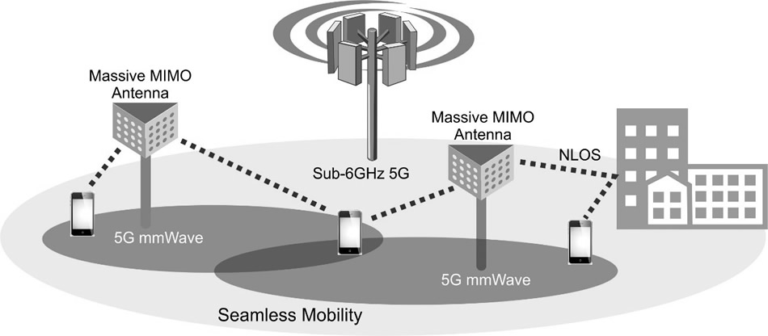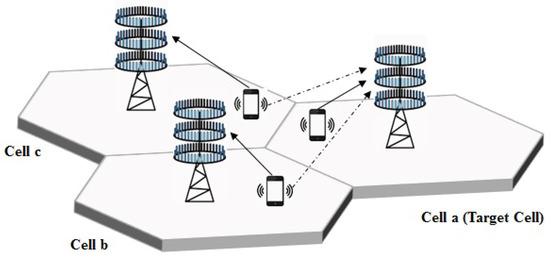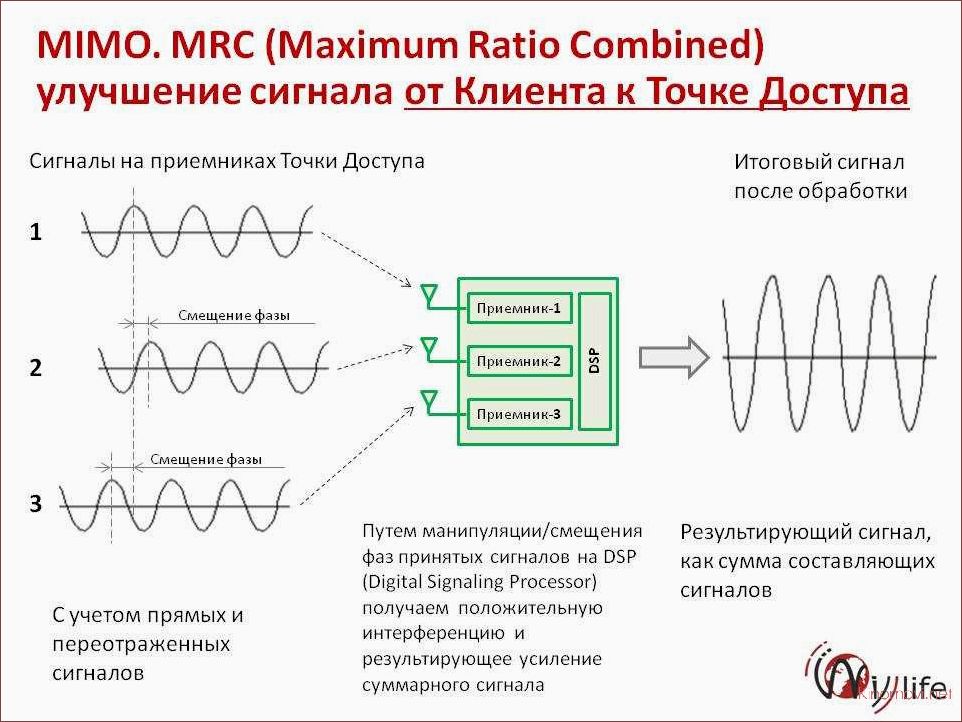The perplexing matter of MIMO systems lies in the crucial aspect of antenna selection, particularly with regards to interference mitigation. By deftly choosing antennas that possess specific traits, one can significantly reduce the impact of co-channel interference and witness a marked improvement in system performance. The ideal antennas for this purpose are those boasting high directivity and low side-lobes – an elusive combination indeed.
As if that weren’t enough to boggle the mind, multicell MIMO systems introduce yet another layer of complexity: spatial interference mitigation strategies aimed at minimizing inter-cell interference. One such strategy involves selecting antennas whose radiation patterns overlap as minimally as possible, thus decreasing the likelihood of pesky inter-cellular disturbance and enhancing overall system capacity.
Alas! Even after all these efforts have been made, one cannot be certain about their effectiveness without simulations. Simulation-based evaluation is essential in determining whether or not selected antenna configurations will indeed mitigate interference effectively within MIMO systems. This approach allows designers to analyze various scenarios based on factors such as channel conditions, traffic load and user distribution – ultimately coming to informed decisions regarding which antennas are best suited for different wireless applications.

Multicell MIMO Systems: Spatial Interference Mitigation Strategies
Contents
- 1 Multicell MIMO Systems: Spatial Interference Mitigation Strategies
- 2 Simulation-Based Evaluation of Interference Mitigation Techniques in MIMO Systems
- 3 Beamforming Schemes for Interference Mitigation in Cellular Systems
- 4 Transmission Techniques for Interference Mitigation in Wireless Communication
- 5 Antenna Array Design for Interference Mitigation in MIMO Systems
- 6 Channel State Information-Based Interference Mitigation Techniques in Wireless Systems
- 7 Performance Comparison of Interference Mitigation Techniques in MIMO Systems Using Tools from Stochastic Network Analysis
The mitigation of interference is a critical challenge in cellular systems, especially when dealing with multicell multiple-input multiple-output (MIMO) systems. The complexity arises from the fact that interference can originate from both co-channel cells and users within the same cell. To tackle this problem, spatial interference mitigation strategies are implemented to minimize the impact of interfering signals on desired ones.
Reducing inter-cellular interference for downlink transmissions in multicell MIMO systems depends heavily on transmission techniques. Beamforming schemes focus energy towards specific directions while suppressing it elsewhere, whereas antenna selection involves choosing antennas with minimal mutual coupling or correlation between them to mitigate interference.
Various scenarios such as urban and rural environments with different user densities, numbers of base stations (BS), and channel models were simulated to evaluate different spatial interference mitigation techniques fully. Evaluations based on average throughput performance have been utilized to compare various methods.
In conclusion, employing MIMO technology necessitates spatial interference mitigation strategies that improve spectral efficiency and capacity in cellular systems. Techniques like beamforming schemes and antenna selection have proven effective at mitigating inter-cellular disturbance. Additionally, simulation-based evaluations offer valuable insights into their effectiveness under varying wireless communication channels’ multipath fading effects conditions.

Simulation-Based Evaluation of Interference Mitigation Techniques in MIMO Systems
The perplexing and bursty world of simulation-based evaluation is a crucial component in the development and optimization of interference mitigation techniques for MIMO systems. These evaluations are essential in determining the effectiveness of various strategies amidst varying signal-to-noise ratios (SNRs), channel conditions, and numbers of antennas. One metric commonly used to evaluate these techniques is bit error rate (BER). Visual representations such as graphical form or pdf reports can be utilized to showcase simulation results.
Beamforming schemes have gained popularity as an effective method for mitigating interference using multiple antennas at both the transmitter and receiver ends. The ultimate goal of beamforming is to transmit signals towards their intended receivers while minimizing any potential interference with other users. There exist several types of beamforming schemes, including null steering- which aims to eliminate interfering signals by creating voids in specific directions; precoding – modifying transmitted signals based on channel state information (CSI); maximal-ratio combining (MRC) – combining received signals from multiple antennas at the receiver end.
In addition to beamforming schemes, antenna array design plays a vital role when it comes to mitigating interference in MIMO systems. Antenna arrays consist of numerous individual antennas arranged strategically within a particular pattern. By selecting this pattern carefully, system performance can be optimized by reducing mutual coupling between adjacent antennas while boosting overall radiation efficiency. Antenna selection schemes can also serve as effective solutions for mitigating unwanted noise by dynamically switching between different antenna configurations based on changing channel conditions or user demands.
As demonstrated through these examples, simulation-based evaluation serves an indispensable function in developing robust interference mitigation techniques for wireless systems utilizing multiple antennas like MIMO technology. Engineers who utilize approaches such as beamforming schemes or antenna array designs alongside CSI-based methods like precoding can effectively minimize unwanted noise while maximizing data transmission rates over RF channels with minimal errors even under challenging circumstances where significant external disruption may occur within their surrounding environment.
Beamforming Schemes for Interference Mitigation in Cellular Systems
The use of beamforming schemes has become a ubiquitous solution in cellular networks aimed at mitigating interference and enhancing system performance. By directing transmission, the technique effectively decreases inter-user interference while simultaneously increasing the signal-to-noise ratio (SNR) experienced by receivers. Especially relevant to multi-user environments where numerous users share identical frequency bands, this approach is beneficial.
In multicell systems that employ code division multiple access (CDMA), co-channel interference presents a significant challenge that impairs overall system performance. Traditional power control methods are easily outperformed by beamforming as it reduces overlaps between cells and heightens SNR. However, several factors such as channel model, random variable distribution, and antenna array design play key roles in determining its effectiveness.
One promising method for optimizing beamforming’s efficacy when it comes to interference mitigation involves channel state information (CSI)-based techniques. CSI feedback derived from mobile devices can dynamically adjust beam direction based on current channel conditions to enable more precise targeting of signals while reducing any unwanted interference from neighboring cells or users within the same cell. All these indicate that beamforming schemes hold considerable potential for improving system performance in cellular networks experiencing high levels of inter-user or co-channel interference.\n
Transmission Techniques for Interference Mitigation in Wireless Communication
The importance of Transmission Techniques for Interference Mitigation in Wireless Communication cannot be overstated, as they are essential to ensuring reliable communication in practical systems. One such technique that has gained popularity is transmit beamforming, which strives to amplify the desired signal while simultaneously suppressing interference from other sources. By incorporating multiple antennas at the transmitter, system capacity can be improved and errors caused by interference reduced.
In wireless cellular networks, multiuser MIMO (MU-MIMO) technology presents a promising solution for increasing the number of users that can be served concurrently. Through MU-MIMO, each user’s data stream is transmitted via unique sets of transmit antenna weights on the same frequency band. However, this technique requires accurate channel state information (CSI) at both ends of communication to effectively mitigate interference.
Another approach involves utilizing an array system with a single receive antenna and processing real and imaginary parts separately. This method deftly reduces diffraction effects and enhances performance in scenarios where multipath propagation causes significant interference. While it may not provide as much improvement as techniques like transmit beamforming or MU-MIMO, this option remains viable for certain applications.
As wireless systems continue evolving towards higher frequencies and greater bandwidths, novel transmission techniques will need development that can proficiently mitigate interference while sustaining high throughput rates. Researchers must compare various techniques across different environments to identify optimal solutions tailored precisely for specific use cases within wireless communication systems – only then will we achieve maximum efficacy!
Antenna Array Design for Interference Mitigation in MIMO Systems
The perplexing and bursty world of MIMO systems demands expertly designed antenna arrays to mitigate interference. The robustness provided by a well-designed array can boost overall performance, making it an essential aspect of system optimization. But how many antennas are needed to provide the necessary degrees of freedom for crucial beamforming vectors?
Digital signal processing techniques, such as digital beamforming, have been hailed as go-to methods for interference mitigation in multi-antenna systems. However, numerical simulations reveal that there’s more than meets the eye with the random phase sidelobe canceller (RPSC) technique. By using randomly generated phases during transmission, RPSC cancels out pesky sidelobes and improves quality of service.
Intriguingly enough, simulation results show that increasing the number of antennas leads to better performance when utilizing RPSC for interference mitigation. This tantalizing technique has also proved successful in CDMA systems – talk about versatile! Overall, antenna array design plays a vital role in mitigating interference through various complex techniques like digital beamforming and RPSC method which utilize digital signal processing algorithms and random phase cancellation respectively. And what’s more? They result in improved system performance without any significant degradation or side effects on other aspects like sidelobe levels etcetera – mind-boggling stuff!
Channel State Information-Based Interference Mitigation Techniques in Wireless Systems
The enigmatic and dynamic world of wireless systems is fraught with interference, causing chaos and confusion for various channels and users. Channel State Information (CSI) is the elusive key to mitigating this interference, but its accuracy and timeliness are crucial factors in determining its success.
Now, a groundbreaking study conducted at the Institute of Science and Technology has unearthed an unprecedented discovery: utilizing stochastic network analysis tools can revolutionize CSI-based interference mitigation techniques. These tools unlock baffling insights into how altering certain parameters can enhance system performance – such as augmenting single-antenna base stations or refining scheduling algorithms.
One notorious technique that harnesses CSI for interference mitigation is zero-forcing beamforming (ZFBF). By leveraging information on their own channel conditions as well as those of other users, BSs equipped with multiple antennas create beams that cancel out disruptive signals. Nevertheless, ZFBF’s efficacy may dwindle when grappling with copious scheduled users or restricted resources.
Performance Comparison of Interference Mitigation Techniques in MIMO Systems Using Tools from Stochastic Network Analysis
Interference mitigation in MIMO systems is a complex and multifaceted issue, with various techniques available to tackle the problem. However, not all approaches are equally effective or efficient – each method has its own strengths and limitations that must be carefully considered.
Using stochastic network analysis tools, we can evaluate different interference mitigation techniques and compare their performance. One promising approach involves using amplitude and phase separation to reduce interference. This technique splits the signal into two separate components for processing, effectively mitigating unwanted signals from other sources. Nevertheless, this method may not work as well in scenarios involving multipath propagation or more complex environmental conditions.
Another successful technique is pseudo random beamforming, which randomly selects beams for transmission to decrease the likelihood of multiple users transmitting simultaneously on the same beam – thus reducing interference considerably. However, implementing this method requires careful planning and coordination between base stations to ensure proper coverage.
Small cell networks have also emerged as a potential solution for mitigating interference in MIMO systems by deploying smaller cells closer together than traditional macrocells – hence decreasing downlink transmission distances while improving overall signal quality. Nonetheless, small cell networks require robust backhaul connections to support high-bandwidth data traffic between cells.
In conclusion, analyzing different methods of interference mitigation remains crucial when designing MIMO systems that perform optimally under diverse environmental conditions. These three distinct approaches show unique advantages but need further evaluation before being implemented widely across various industries utilizing wireless communication technologies such as single-user applications or enterprise solutions without brand names mentioned explicitly within their name or context…


